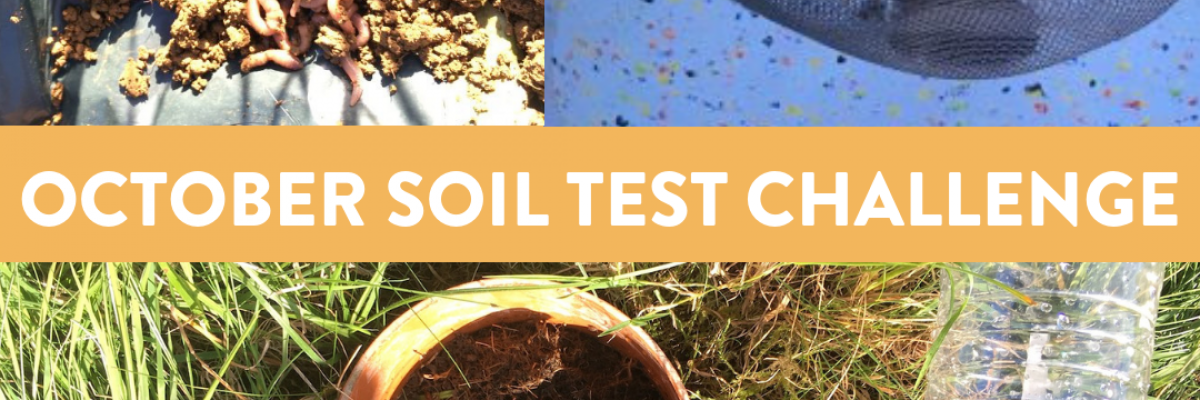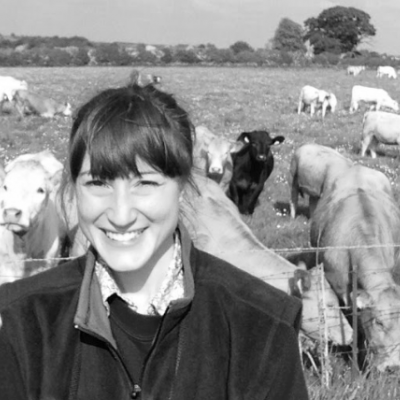
Take the October Soil Test Challenge & get free advice from a soil health expert
19 October 2018
Soil is your most important resource as a farmer, but do you really understand it and know how to improve it?
This month we challenge you to do 3 simple but key soil tests on your land. It takes just one day and is essential to understanding your soil health and how to manage it.
If you begin soil monitoring now you could be ahead of the curve with meeting potential soil health targets proposed for the Environmental Land Management Schemes in the new Agriculture Bill.
Get free soil health advice:
If you already have the Soilmentor app or buy it and do the following 3 soil tests this month, we’ll give you a free 20 minute phone consultation with soil health expert Jenni Dungait to discuss the results.
Before you start:
- Pick 3 fields to test, repeat the tests 3 times in different locations on each field.
- On the day you do your tests, take a note of the weather over the last 24 hours because the temperature and amount of rainfall will affect the outcome of the tests.
- Take photos of each place that you test, and the results of each test, using the Soilmentor app. This helps you to monitor change over time and is important for getting advice from our soil health expert later.
The three tests:
TEST 1 - Earthworm Count

Earthworms are a key indicator that your soil is alive and has good soil organic matter contents. They move nutrients around the soil profile, playing a vital role in feeding your plants, and open up the soil structure allowing water and air into the soil. Their sticky mucus also helps to build good soil structure.
Equipment: spade and tray or plastic bag
Method: Dig a 20 x 20 x 20 cm hole with your spade. Place the dug up soil on the tray/ plastic bag. Using the app, take a photo of the soil profile then gently break it apart with your hands. Take a photo, count the number of worms and record the number in the app.
In the UK, an average of 15-20 worms in a 20 x 20 x 20 cm soil pit is considered good, but it will also depend on the time of year and your soil type, and any recent field management. Using Soilmentor makes it easy to look back and compare when you do the count again next year.
TEST 2 - Slake Test

How well your soil structure holds together in water shows you how it withstands heavy rainfall, and what its capacity for storing water and nutrients is like. Good soil structure is an indicator that you have adequate soil organic matter that supports the life in your soil.
Equipment: spade, sieve with small mesh (>2mm), bowl of cold water, stop watch, plastic bags x9, pen and paper for labelling soil samples
Method: Take some of the soil from the sample dug up for the earthworm count or dig up a new sample. Select 3 pieces (aggregates) which are roughly 1 cm in diameter. Put them in a plastic bag, write the name of the field on the paper, tear it off and put it in the bag. Take care not to squash the soil. Repeat this process for all the soil samples you take. Take all bags of soil home and take the soil out and allow it to air dry overnight in a warm place being careful not to mix up the different samples. The next day, for each sample, arrange the soil aggregates in the sieve and fully immerse in water up the lip of the sieve.
Observe the aggregates under water for 1 minute and lift them out then score them using the scale on this webpage. If they score 0-2 the test is over and you can record the score in the app. If they score higher than 2, move onto the second part of the test: gently raise the sieve up and down five times, so that the surface of the water just touches the top of the aggregate. Score using the scale and record in the app. We only give a soil a score of 8 if the water is crystal clear (i.e. the aggregate has not broken down at all) after the test. Take photos of each slake test.
Well-structured soil is composed of rounded aggregates which will not break down easily in water. This means soil will retain its structure after heavy rainfall, and allow water and nutrients to move between the aggregates into deeper layers of the soil for your crops to use later.
Aggregates that often have sharp edges and that break down easily in water may suggest that they are only held together because of compaction. As soon as there is a heavy rainfall the soil structure falls apart and blocks the soil surface increasing the likelihood of surface run-off and erosion.
TEST 3 - Infiltration rate

Infiltration rates clearly show how ready your soil is to soak up water. If the soil structure is open with plenty of air spaces the water will easily move down into the soil profile until the air spaces are full with water. Nutrients also move with water into the soil profile.
Equipment: 150 mm x 150 mm metal/plastic tubes (with 85 mm depth marked), water bottle with 450 ml marked on it, water (4L or so per field), stopwatch (on phone), mallet (for driving tube into soil) & wood block (to protect the top of the pipe from damage when hammering in)
Method: Clear plant growth from the soil surface. Insert tube into the ground to a depth of 85 mm. Use the app to take a photo of the location showing the tube and groundcover. Fill your pre-marked water bottle with exactly 450 ml of water. Pour water steadily into the top of the pipe and start stopwatch. Stop timing when all the water has disappeared but the ground is still glistening and record the time in the app. Measure out another 450 ml of water in the bottle and repeat the remaining steps, recording the time in the app.
Infiltration rates for each field help you to understand how easily water and nutrients can move into your soil. Very slow rates may indicate waterlogging, soil sealing and compaction, whilst very rapid rates may reveal an increased risk of nutrient leaching.
If you haven’t already, all you need to do is buy the Soilmentor app and get started! If you have questions email info@vidacycle.com
Click here to tweet that you’ve accepted the challenge! Share your soil test photos on Twitter with #OctoberSoilTestChallenge mentioning @soilmentor
Annie Landless writes of herself:
"I’m a farmer’s daughter with a working background in marketing and technology. These worlds collided when I took on community development for Soilmentor, an app for farmers to collect and learn from data on their soils, vines, trees and more. My farming journey continues with studying an Agriculture Diploma at RAU in preparation for working with my family on taking our farm forward together in the future."


